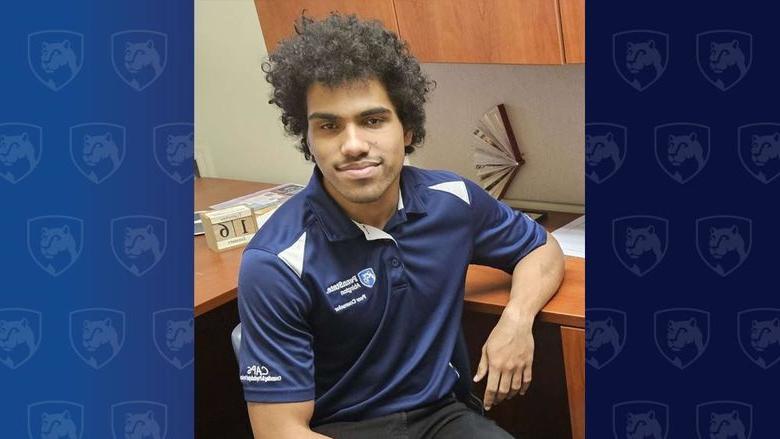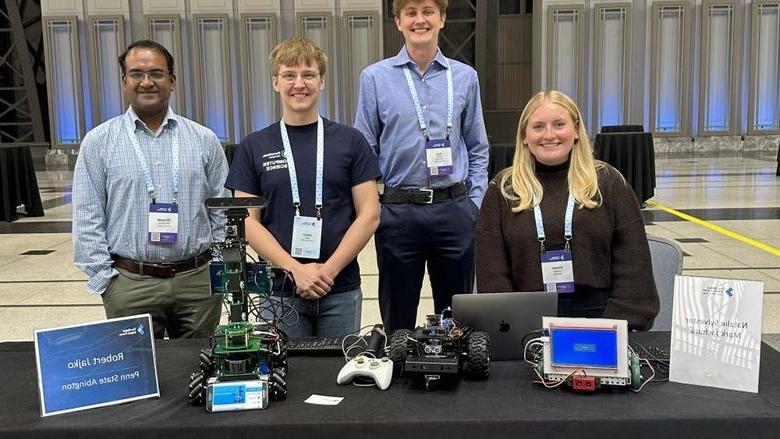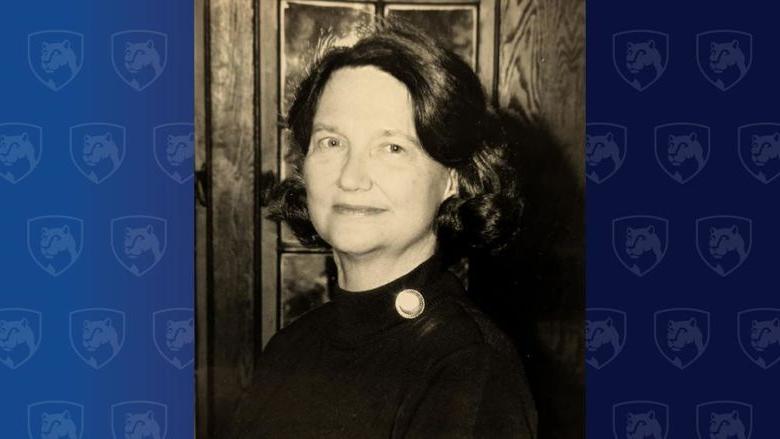
A first-year Penn State Abington engineering major navigated a cardboard boat his team built for an engineering design course.
ABINGTON, Pa. — First-year Penn State Abington engineering majors tested boats they built recently for a required cornerstone design course using cardboard, thin plastic sheeting and duct tape to transport one adult across a local pool.
The brainchild of David Brown, a licensed professional engineer and lecturer in the program, the Cardboard Regatta featured teams of students who collaborated to design a boat that would keep one of their teammates dry while paddling a lap at the Willow Grove YMCA.
“The goals of the project were for students to learn about the engineering process and rapid prototyping. They had to design and build three progressively larger boats, find out what worked and what didn’t, and then improve it. It’s the basis of the engineering process. They learned about teamwork, scheduling, documentation, experimentation and data collection,” Brown said.
During the five-week process, the teams tested the first iteration of their boats, which carried two pounds of weight, in the duck pond on Abington’s campus. They then modified their designs and scaled them up to carry 20 pounds before taking two weeks for the full-size build that they tested at the pool.
When they arrived at the YMCA, Brown weighed the rider, the boat, and the paddle for each team. Then the “captain” headed into the pool, accompanied by shouts of encouragement from their teammates and the curious stares of retirees and others who were swimming nearby and peering down from an elevated track.
The students overall were pleased with their results and happy that there were no catastrophic failures — in other words, none of the boats sunk, and no one went overboard.
“It was a really hard project, but I am so happy our boat worked. We had to problem-solve our way through it because we started with a different design, and we kept working with each other to get it right,” student Amina Reid said.
Brown graded the teams based on the complete process, not just whether the boats kept the sailors dry. It was not a race so the amount of time it took to complete the lap was irrelevant.
“I offered bonus points to the students who built the lightest boat to encourage them to push their limits and compete with each other. They were rewarded for taking risks, pushing boundaries and trying to find the sweet spot,” he said.
Student Damian Santiago and his team occasionally endured turbulence trying to complete the project successfully.
“We had to try different prototypes to bring this to fruition, but the collaboration for problem solving made it much better to deal with,” he said.
Tyler Jones agreed that working in a group was crucial to a good outcome.
“I learned so much about project management from this experience, how to plan, and the trials and tribulations of taking on a challenge like this,” he said.
Twelve boats were launched with most measuring about five feet long. One was designed like a pontoon while another resembled a raft. Some of the students scribbled “This isn’t the Titanic” and “Your feet go here” with arrows in black marker on the inside of their craft.
Brown finds that the EDSGN100 engineering design course “welcomes first-year students into the world of engineering.”
"This class gives them hands on design projects to develop while building their technical knowledge. It teaches them fundamentals like group work, 3D modeling, and presentation skills. We set them up for success long term with the fundamentals of the engineering practice, mindset and ethics,” he said.
Brown began teaching at Abington this semester, and as he switched gears from more than two decades as a structural engineer to college instructor, the Cardboard Regatta proved to be an impactful experience for his students
“I wanted this project to be engaging and fun while reinforcing the course content. The students loved building, testing and using their creativity,” he said.
About Penn State Abington
Penn State Abington provides an affordable, accessible and high-impact education resulting in the success of a diverse student body. It is committed to student success through innovative approaches to 21st-century public higher education within a world-class research university. With more than 3,100 students, Penn State Abington is a residential campus that offers baccalaureate degrees in 25 majors, accelerated master's degrees, undergraduate research, the Schreyer Honors College, NCAA Division III athletics and more.








